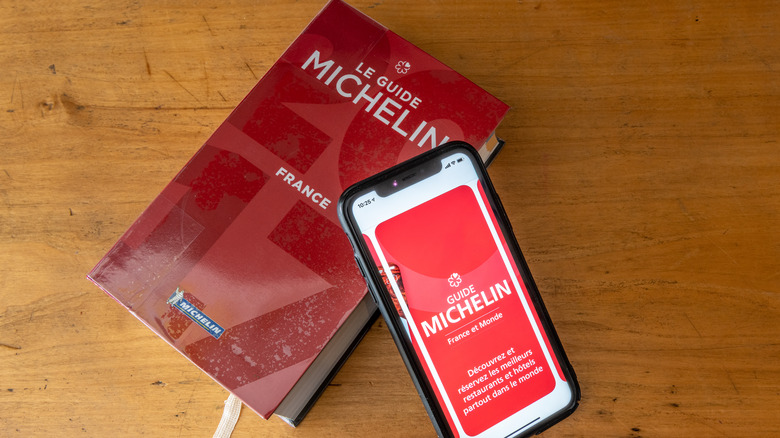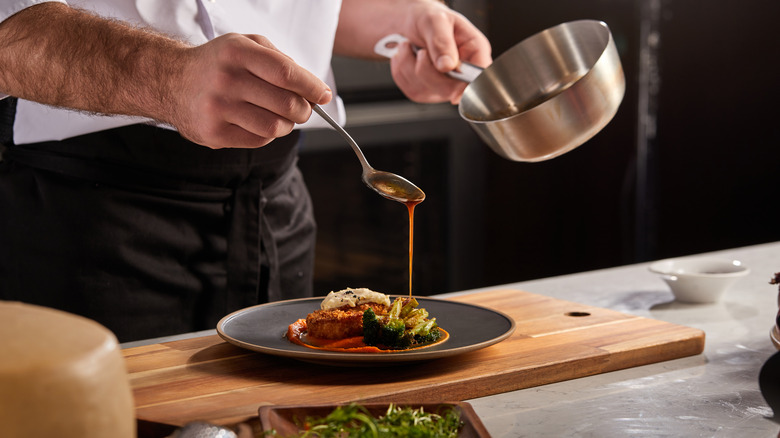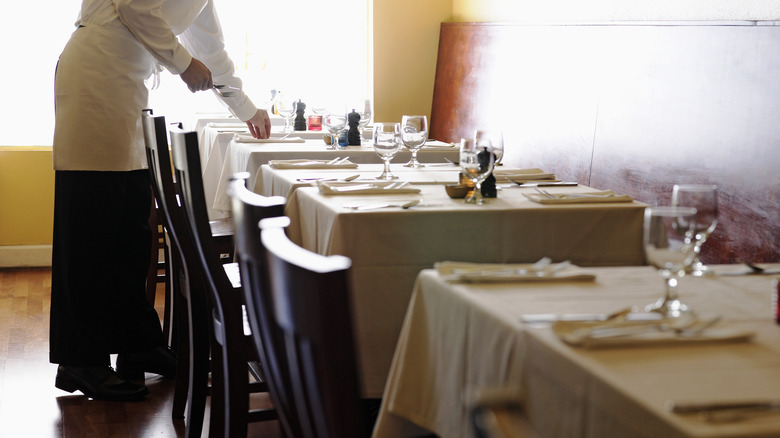What Are The Duties Of A Michelin Guide Inspector?
The practice of reviewing a restaurant was a performative one for former New York Times food critic Ruth Reichl. In her memoir, "Garlic and Sapphires: The Secret Life of a Critic in Disguise", Reichl reveals that during her six years on the job, she nearly always reviewed restaurants dressed as someone else and even developed personas to fit the occasion. With the help of an acting coach, Reichl morphed into one of a number of made-up characters, from dowdy Molly to Chloe the siren, before stepping out — once even taking inspiration from her mother Miriam, per The New York Times. There were times Reichl tested wait staff and chefs to see how far she could push, and while her methods weren't wholly appreciated by some of her peers, we can imagine it might have resonated with restaurant clients who might have had a bad experience or two at the establishments she visited.
The world of a Michelin inspector is closer to the one Reichl inhabited as a critic, than Anton Ego of Disney's "Ratatouille" or Oliver Platt's Ramsey Michael in "Chef." Both were seen as stern, imposing figures with the power to march into restaurants and intimidate all around them with simply their presence. Instead, Michelin inspectors have been compared to an agent with the CIA "but with better food", per Forbes. They are secretive, anonymous, and they are careful about who they can trust.
Michelin inspectors have one task
Michelin inspectors have just one job: to rate restaurants and make judgments based on the food that they are served. Michelin says all the inspectors are employees of the organization only and are not affiliated with any other parties.
Their judgment is based on five criteria: quality, how well the chef has mastered cooking techniques, whether the chef's personality manifests in their dishes, how well the flavors work together, and how consistent the food is from one visit to the next. Grades then are handed out after several visits which take place throughout the year, with the judgment based on uniformity and consistency — which means the quality of the food and service needs to be maintained over an extended period of time, regardless of circumstance per Forbes.
Michelin inspectors don't limit themselves to top-tier restaurants, either. An anonymous inspector reveals that they eat just about everywhere: "from village inns to the restaurants of the finest hotels, looking for the best places across all price ranges and cuisine types. There are great surprises to be had everywhere, even in the more modest restaurants," they explained to Michelin.
The world has no boundaries for a Michelin inspector
A day at work for a Michelin inspector usually involves lunch and dinner and then writing the meals up in a report. But it's not always about food. Since inspectors need to know their markets, they need to carry out plenty of research and be in the know about the latest developments in the food scene, per Michelin. And while it sounds like all the recon is carried out by individuals, there is a lot of collaboration between the inspectors as well.
An anonymous inspector who spoke to Forbes also explained that there is a good deal of travel involved — inspectors can be away from home three weeks out of every month and can eat up to 10 meals out a week. They add that specialists from other parts of the world may travel to a new city in order to ensure that stars for a restaurant have been given correctly. Inspectors are even sent to other countries to deepen their knowledge of the local cuisine.
If this sounds like a lot of food for a brief period of time, know that inspectors don't necessarily pay for their food habits with growing waistlines. To balance the constant dining out, they exercise, watch what they drink, limit the amount of rich food they consume, and try and stay on a schedule.


